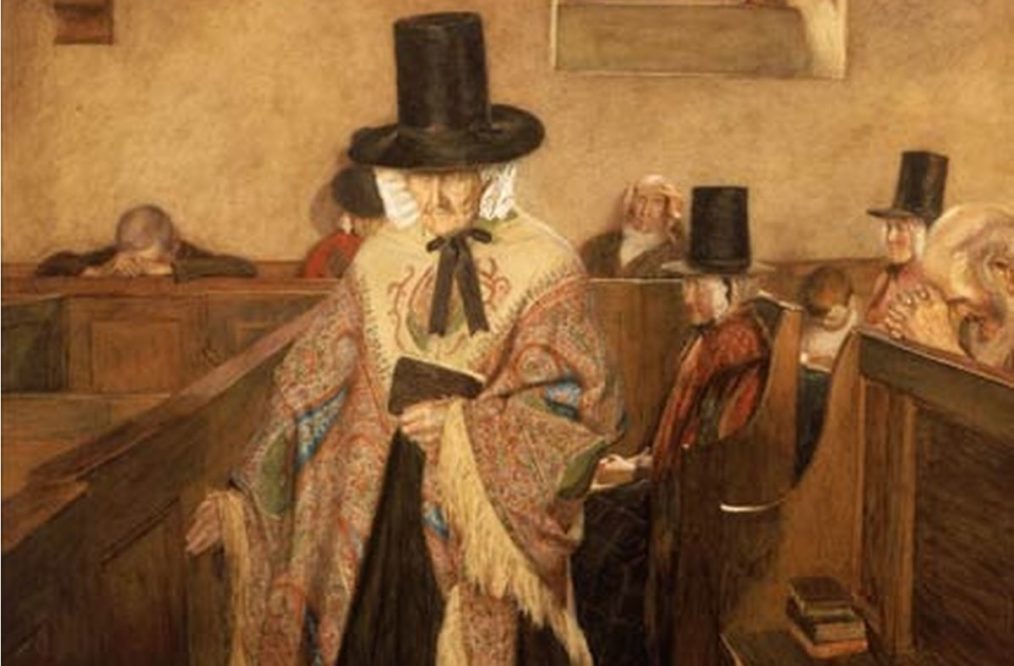The unknown famous Welsh woman

Norena Shopland
Every year, International Women’s Day is celebrated on 8 March; and the same month sees the observance of Women’s History Month.
These events are important for many reasons, including calls for positive changes in equality, and to recognise and celebrate contemporary and historic women’s achievements, the latter a particular problem.
The Dictionary of Welsh Biography (DWB), with over five thousand biographies of individuals who have made notable contributions to society only includes some 5% about women.
Wikipedia is not much better, of its many thousand English language biographies, only 19.77% are about women. Therefore, there is a great need to get women better recorded and celebrated.
Representation
To combat this in Wales, the Diversity Project of the DWB is undertaking new work to improve the representation of diverse history and people are invited to take part.
In answer to this, I contributed a piece on a woman who adored the walls of thousands of houses in Wales and is one of the most recognisable images of a Welsh woman, but is generally, little known.
In 1909, the English painter Sydney Curnow Vosper (1866–1942), married to a Welsh woman, exhibited a painting, Salem, at the Royal Academy, London which was bought by the industrialist William Hesketh Lever (1851–1925) for £105 (about £15,500 today).
He decided to give out tokens when people bought his Sunlight Soap which could be redeemed for a print of the painting, an early example of this kind of marketing.
As a result, Salem became enormously popular in working-class houses, everyone was familiar with it, and it became a symbol of Welsh piety, Nonconformism, and traditional Welsh costume.
Pentre Gwynfryn
The woman in the picture is Siân Owen, 71, a widow living with her son and his family, and the Baptist chapel is Capel Salem in Pentre Gwynfryn, Gwynedd.
Although a local, Siân was not a member of the chapel and it is not known why Vosper chose her. Indeed, of the seven people in the picture only one was a member.
The eighth figure is a tailor’s dummy (behind Siân with the red shawl) which Vosper nicknamed ‘Leusa Jones’ but gave it Siân’s face.
He had borrowed it because Siân had difficultly standing still for the long hours needed to paint the shawl, but the chapel elders were uncomfortable with a dummy in the chapel and insisted it was removed when Vosper was not working on the painting.

The ornate shawl that caused Vosper such trouble did not belong to Siân but was on loan from Mrs Wiliams, wife of the Vicar of Harlech.
And, despite all the women in the painting wearing black stovepipe hats none of them owned one so Vosper had borrowed it from Elin Edwards, the chapel’s caretaker, and mother of Mary Rowlands, who appears on the far right.
The shawl was also at the centre of a belief that the devil’s face could be seen in it. Vosper denied it, but did admit to a ghostly face of a young girl in the window looking in, and it may be this that started the rumours – but it does take quite a stretch of imagination to see the devil.

Several suggestions have been put forward to explain the devil’s presence – and all blame Siân – that she is late, moving about the chapel in the moments before the service when people should be in quiet contemplation; that she is vain for wearing such as ornate shawl; that she is wearing a hat in chapel (but so are the other women); or that she is leaving before the service has begun and therefore shows disrespect – the mundane explanation is that Vosper probably put her in front of the door to access the light.
Controversy
Siân lived with the controversy surrounding the painting for a further 18 years before dying on 6 June 1927 and she is buried in St Mary’s, Llanfair.
It seems she had something of a hard life, possibly the controversy around the picture adding to that, as she had engraved on her tombstone:
Cystuddiwyd fi yn ddirfawr: bywha fi, O Arglwydd yn ôl dy air. [I am afflicted above measure: give me life, O Lord, according to Thy word]. Psalms 119:107
Nevertheless, Salem has become one of the most iconic images of Wales and Siân one of the most famous unknown women of Wales.
If you would like to submit a piece on a significant Welsh woman, or write on one of the women earmarked for inclusion in the DWB, go to https://biography.wales/amrywedd
Support our Nation today
For the price of a cup of coffee a month you can help us create an independent, not-for-profit, national news service for the people of Wales, by the people of Wales.





Why do you say that it is controversial that she is wearing a hat in chapel? In 1908 is would be unthinkable for a woman to attend a place of Christian worship without a hat on her head. (see 1 Corinthians 11:5: But every woman that prayeth or prophesieth with her head uncovered dishonoureth her head: for that is even all one as if she were shaven.)
Even up to the mid-1960s it would have been unusual to see a grown woman in chapel without a hat! To be sure, the remark is that “Several suggestions have been put forward to explain the devil’s presence – and all blame Siân – … that she is wearing a hat in chapel…” – it is not the writer passing any judgment on the rights or wrongs of hat-wearing.